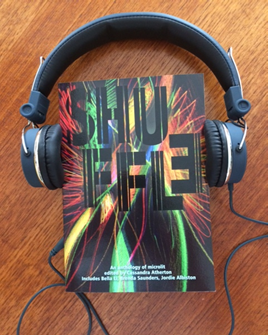We invited authors to reflect on the soundscapes created by Sonant Bodies & friends for their microlit from the Shuffle anthology. In this post, you will read the responses of Jordie Albiston, Richard Holt, Paulette Smythe, Jen Craig and Christine Howe. We are also hosting an indepth discussion on microlit text and sound with Shuffle authors and composers at the upcoming Newcastle Writers Festival, April 6.
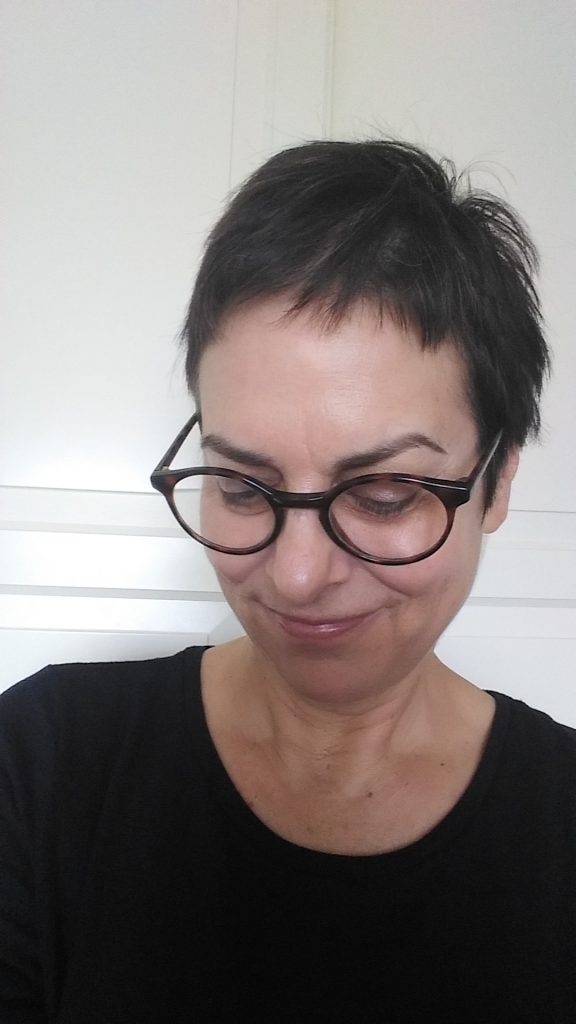 Jordie Albiston
Jordie Albiston
- What are your impressions of the composition created from your text from the Shuffle anthology? Are there any particular aspects which you would like to comment on?
I hear Kezia Yap’s composition as a soundscape rather than a musical piece, & I think this is fitting for a poem titled ‘disconcert’. I like the depth of space & the density of sound Yap has created, with the voice simply acting as one more instrument…
- What it is like having your work interpreted by a stranger? Were you surprised by the composer’s interpretation of your text, and if so, why?
The rhythms in my poetry are quite strong, which is sometimes a challenge for a composer. Yap has avoided superimposing extraneous rhythm/s over the text & that has allowed the words to breathe more openly than they do on the page.
- How does this new iteration of your work make you think differently about this text, or about the creative process in general?
It has made me see the poem in a new & strange, otherworldly kind of way. I thought I had written a simple account of a moment of aloneness in the bush by a creek…
- How do you think this performance of your text, including both the narration and soundscape, will impact the listener? How do you think this will compare to the experience of someone reading it on the page?
I think the composition takes the listener “out”, while the poem forces the listener “in”…
- What role do you think sound plays in storytelling?
There is an immediacy to sound in comparison to the concrete visuals of the page: there is perhaps more room for the listener’s own imagination to inhabit.
- Describe the composition of your work in three words.
compressed / preoccupied / private
JORDIE ALBISTON has published twelve poetry collections and a handbook on poetic form. Albiston possesses an ongoing preoccupation with mathematical constructs and constraints, and the possibilities offered in terms of poetic structure. Her work
has won many awards, including the Mary Gilmore Award and the 2010 NSW Premier’s Prize. She lives in Melbourne.
 Richard Holt
Richard Holt
1. What are your impressions of the composition created from your text from the Shuffle anthology? Are there any particular aspects which you would like to comment on?
What astonished me was the aural mood of the piece composed by Kezia Yap. I realised that, though the story is very much about sound, I’d never heard it before. It was quite a revelation to me. I was reminded of the tonal compositions of Glen Branca that I used to listen to in the 80s. I found the experience quite mesmerising.
2. What it is like having your work interpreted by a stranger? Were you surprised by the composer’s interpretation of your text, and if so, why?
I always enjoy the act of interpretation. It requires the text to stand on its own. Direct collaboration gives the writer the opportunity to meddle. By comparison I love the unexpected turns when another creative voice interprets a text. What delighted me was the sense of a landscape composed of both intimate and ambient sounds.
3 How does this new iteration of your work make you think differently about this text, or about the creative process in general?
I will definitely be more mindful, in the future, of the ‘sound’ of my texts and the sensual possibilities of the words.
4. How do you think this performance of your text, including both the narration and soundscape, will impact the listener? How do you think this will compare to the experience of someone reading it on the page?
Reading from the page and listening are very distinct experiences. The listener takes the role of an audience, accepting the work more as a performance than as something they need to perform by reading. This feels much more immersive.
5. What role do you think sound plays in storytelling?
Words and sound can’t be separated. Many of the word choices a writer makes are based on a choice between sounds rather than meanings. Sound is not peripheral to narrative.
6. Describe the composition of your work in three words.
Near and far
RICHARD HOLT’s micro-fiction collection, What You Might Find (Spineless Wonders, 2018) was described by The Australian’s
Ed Wright as ‘a tonic for readers in search of new angles from which to spin the world around in their heads’. When not writing
he creates text-based installations and performances in public spaces. Richard is part of the #storybombing collective.
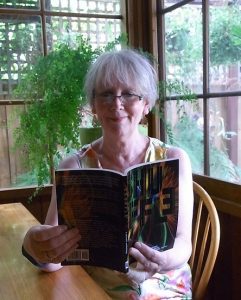
Paulette Smythe
- What are your impressions of the composition created from your text from the Shuffle anthology? Are there any particular aspects which you would like to comment on?
James Hazel’s composition gave the story a completely different slant to the one I had envisioned when composing it. I really enjoy the fact that, once the writing process is over and your ‘baby’ goes out into the world, it takes on an independent life of its own, so there’s no correct interpretation – it’s all down to the reader. James’ music gave my story a creepy kind of feeling – almost sinister – and I felt ‘B’ was no longer the sexy stranger next door, but someone whose presence might be both disturbing and intriguing. The echoes in the music were very effective in creating this kind of tense ambience.
- What it is like having your work interpreted by a stranger? Were you surprised by the composer’s interpretation of your text, and if so, why?
As a writer, it’s a genuine privilege to have a composer take the trouble to interpret your written work and it’s fascinating to see the layers of meaning that James has extracted from the text. As mentioned above, I was surprised by his take on the text but also really delighted. I think his composition is really original and the sounds he created very evocative. I’m impressed that he was able to do this without resorting to an avalanche of sound.
- How does this new iteration of your work make you think differently about this text, or about the creative process in general?
Not differently really, as I believe that in such iterations lie the beauty and wonder of all creative work. However, I do find it very interesting to experience a variety of interpretations of any given mode of creative expression.
4. How do you think this performance of your text, including both the narration and soundscape, will impact the listener? How do you think this will compare to the experience of someone reading it on the page?
It’s possible that listeners will perceive the story as a tale of mystery with an eerie feeling to it, as I did. I can’t say for sure. The narration without the soundscape has a completely different feel, nothing spooky at all there, instead a feeling of unrequited longing and sadness. On the page – hmm, I can only guess. When I wrote the text, I had a particular jazz beat in mind. The rhythm was every bit as important as the onomatopoeia I used to bring to mind the sounds woven through the text. I also hoped to infuse the tale with a gentle and rather poignant eroticism. Although I hope that people catch on to that beat and that feeling when reading, it doesn’t matter to me if other elements draw their attention or if they find meaning in different aspects of the text.
- What role do you think sound plays in storytelling?
For me, it plays an enormous role. For that reason, when I write I read my text aloud often. If it doesn’t sound right, I discard it. I think that has to do with story-telling pre-dating the written word. For millennia, men, women and child sat around camp-fires at night listening to stories and the spoken word had primacy. Print is a late-comer to this genre. There is something undeniably satisfying about a story that we can ‘hear’ in my minds – the story doesn’t need to refer to any particular sounds, but personally I need to hear the writer’s unique voice as I’m reading to be fully engaged in the tale.
6. Describe the composition of your work in three words.
intriguing, suspenseful, disquieting.
PAULETTE SMYTHE lives in Melbourne where she teaches English to migrants and refugees. Her writing has previously
been published in Antipodean SF, Bewildering Stories, Verandah and Eureka Street. Paulette has initiated and instigated the Shuffle Translation project.
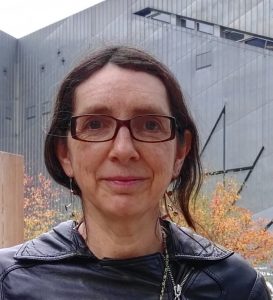
Jen Craig
- What are your impressions of the composition created from your text from the Shuffle anthology? Are there any particular aspects which you would like to comment on?
I loved how the composition saturated the piece – to the point of blasting it open. It thrilled me to feel how the whole inside/ outside aspect of what I was trying to do in my writing moved from the implicit to the explicit. With my voice externalised as it were, and made strange (to me), it was easier to get a sense of how writing is also a thing in the world, however much I might pretend sometimes that it isn’t.
- What it is like having your work interpreted by a stranger? Were you surprised by the composer’s interpretation of your text, and if so, why?
Although Stephen Adams as a composer and person is hardly a stranger to me, he still managed to make my piece interestingly strange. I didn’t expect the richness of his treatment, especially at the beginning of the piece. I often have a sense that my writing emerges from me in a long thin line even though, at the same time, I also feel it being enacted through me.
- How does this new iteration of your work make you think differently about this text, or about the creative process in general?
This sound treatment of “Jamming” has dipped me further into appreciating both the durational aspect of this piece of writing as well as the sensory and, at times, anarchic feeling of the words themselves. It has also confirmed in me a readiness to see what happens in collaborations in general – to be open to newness in any creative act.
- How do you think this performance of your text, including both the narration and soundscape, will impact the listener? How do you think this will compare to the experience of someone reading it on the page?
I would like to hope that this performance of the work will underline, or even thicken up, what I enjoy about the performative aspect of (reading) writing in general – which is to say the individuality or peculiarity of its voice – and yet at the same time will embed it more thoroughly in a wider and far more complex sensory context. The voice en plein air. - What role do you think sound plays in storytelling?
For me, sound is what is already implicit in the act of putting one word next to another. Even when I read in my head, I can feel my brain and my chest sort of rocking and shaking with it. - Describe the composition of your work in three words.
Attempts to resist
JEN CRAIG’s short stories have appeared in various Australian literary magazines. She has published a novel Since the Accident (2009) and a novella Panthers and the Museum of Fire (2015), which was longlisted for the 2016 Stella Prize. She has recently completed a creative PhD about transgenerational trauma and writing.
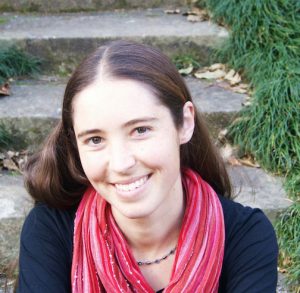 Christine Howe
Christine Howe
- What are your impressions of the composition created from your text from the Shuffle anthology? Are there any particular aspects which you would like to comment on?
I loved it! I wasn’t expecting the percussion, or the way it would mimic both the rhythm of a heartbeat and breaking waves. The crescendo of sounds towards the end of the (written) piece provided a lovely climax that took the writing beyond where I had imagined it would go.
- What it is like having your work interpreted by a stranger? Were you surprised by the composer’s interpretation of your text, and if so, why?
It’s fascinating. I was initially surprised at the interpretation of the text – the sense of nostalgia hinted at by the long bass notes and the echo of children’s voices wasn’t something I experienced as I was writing the piece – but I really like the way it has been interpreted, and the sense that the music has opened out something in the text that I wasn’t aware of previously.
- How does this new iteration of your work make you think differently about this text, or about the creative process in general?
I wonder whether there was a sense of nostalgia in the text all along, but I was so focused on other aspects of the text (the sea as mother, our beginnings in the saltiness of our mothers’ wombs, what it feels like to be immersed in the sounds of the sea) that I didn’t see it. Of course it’s there – the sepia photograph! – but it took Sarah’s interpretation for me to appreciate this aspect of the text. In terms of the creative process, it highlights the fact that the themes I set out to explore, as the author, become more or less relevant to the reader depending on their interpretation of the piece.
- How do you think this performance of your text, including both the narration and soundscape, will impact the listener? How do you think this will compare to the experience of someone reading it on the page?
I think it might prompt the listener to remember aspects of their own childhood, to experience a sense of longing – it is impossible to return: the children’s voices are an echo, just one aspect of the overall soundscape. I think this provides a richness that the written text alone simply can’t create. The words themselves can conjure up images and hint towards the texture of sounds, but listening to this performance offers an experience of immersion in sensation and tone that is quite different to simply reading the words on the page.
- What role do you think sound plays in storytelling?
There are many levels to this question, I think: the physical quality of the storyteller’s voice if the story is read aloud; the sound quality and rhythm of the words themselves; the way sounds are described in words; and the significance of various sounds within the story itself. In this sense, sound is crucial in storytelling – not just in terms of communicating ideas, but also in terms of contributing to tone, atmosphere and potentially evoking an emotional response in the reader/audience.
- Describe the composition of your work in three words.
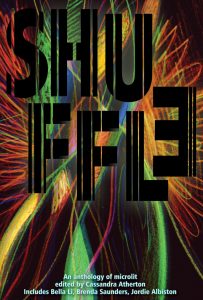
Echoes of nostalgia
CHRISTINE HOWE is a writer and academic who teaches at the University of Wollongong. Her poetry has appeared in Cordite
and Law, Text, Culture, and her first novel, Song in the Dark, was published by Penguin.
You can read what these composers had to say about creating soundscapes for Shuffle microlit, here. And you can purchase copy of Shuffle at your favourite bookstore on online here.

